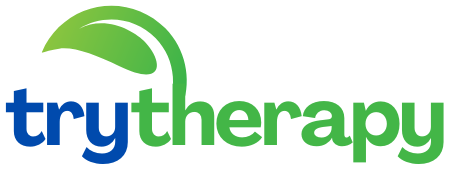Human trafficking isn’t a distant problem; it happens in our communities every day. Learn to recognize the signs, understand the mechanisms, and discover how you can help combat modern slavery. Most people imagine human trafficking as dramatic kidnappings or clandestine border crossings, but the reality often looks startlingly ordinary. The nail technician who never makes eye contact, the farmworker who seems never to leave the property, the teenager who suddenly has expensive gifts but won’t say where they came from, these everyday scenes sometimes conceal America’s darkest open secret. I first confronted this truth not through news reports but through my cousin, a nurse who treated a patient with inexplicable injuries and an inconsistent story. Her decision to ask gentle questions rather than accept surface explanations literally saved a life that day and changed how I see the world around me forever.
Human trafficking operates through coercion and exploitation rather than necessarily physical restraint. Traffickers typically use psychological manipulation, debt bondage, threats to family members, or substance dependency to maintain control. The most common scenarios include forced labor in agriculture, construction, domestic work, and restaurants, while sex trafficking often involves victims who believe they’re in romantic relationships with their exploiters. What makes trafficking particularly insidious is how easily it blends into legitimate settings—the construction crew working unusual hours, the massage parlor open late, the family that seems oddly isolated from their community.
Recognizing potential trafficking requires understanding subtle indicators rather than obvious chains. Key signs include individuals who lack control over their identification documents, seem unable to leave their work situation, show signs of physical abuse or malnourishment, or exhibit unusually fearful or anxious behavior. Inconsistencies in their stories, lack of knowledge about their location, or appearing under the control of another person during interactions should raise concerns. I’ve learned to pay attention to workers who never handle money directly, live and work at the same location, or seem unusually young for their supposed profession.
The trauma experienced by trafficking victims creates complex psychological barriers to seeking help. Many develop survival strategies that include loyalty to their traffickers, fear of law enforcement, or profound shame about their situation. This explains why victims might not self-identify even when opportunity arises. The most effective approaches focus on building trust through consistent, non-judgmental interactions rather than immediate rescue attempts. Service providers like healthcare workers, airline staff, and teachers often serve as critical intervention points when trained to recognize subtle signs.
Legal frameworks have evolved to address trafficking’s complexities. The Trafficking Victims Protection Act established a three-pronged approach: prevention through public awareness, protection through services for victims, and prosecution through enhanced legal tools. What many don’t realize is that trafficking doesn’t require transportation across borders, domestic trafficking within states represents a significant portion of cases. Minors involved in commercial sex are automatically considered trafficking victims under U.S. law, regardless of apparent consent.
Community vigilance provides the first line of defense. Neighborhood watches that include awareness of unusual patterns, like multiple people living in single-family homes, windows covered with blankets, or frequent nighttime activity at businesses, can help identify potential situations worth reporting. Hotels implementing training programs for staff have disrupted sex trafficking operations, while truck drivers trained through programs like Truckers Against Trafficking have become instrumental in reporting suspicious activity at rest stops.
The digital landscape has transformed trafficking recruitment methods. Traffickers now commonly use social media, gaming platforms, and dating apps to identify and groom potential victims, particularly minors. They create false job advertisements for modeling, nanny positions, or overseas work that lead to exploitation. Parents and educators need to understand these digital risks while maintaining open conversations about online safety without creating unnecessary fear.
Supporting survivors requires specialized approaches that address complex trauma. Effective services provide comprehensive care including safe housing, mental health support, legal assistance, and life skills training. The restoration process often takes years as survivors learn to trust, establish healthy boundaries, and develop independent living skills. Many organizations employ survivor-leaders who understand the journey firsthand and can provide peer support that professionals cannot.
Economic factors create vulnerability that traffickers exploit. Poverty, homelessness, foster care involvement, and substance abuse issues all increase risk significantly. Prevention efforts must therefore address root causes through community support systems, youth programs, and economic opportunities. I’ve seen remarkable success with mentorship programs that provide stable adult relationships for at-risk youth—sometimes making the difference between vulnerability and resilience.
Individual action makes a real difference. Learning the signs, knowing the National Human Trafficking Hotline number (888-373-7888), and speaking up when something seems wrong creates collective awareness that disrupts trafficking networks. Supporting businesses with transparent supply chains, advocating for victim services, and educating others all contribute to solutions. The most important lesson I’ve learned is that combatting trafficking isn’t about being a hero, it’s about being a mindful, engaged community member who notices when something doesn’t seem right and has the courage to act.
Human trafficking thrives in silence and isolation, but it cannot withstand informed, compassionate communities. Each of us has the power to break that silence, through awareness, through conversation, and through the willingness to see what others might miss. The greatest weapon against darkness has always been light, and in the fight against human trafficking, that light comes from education, empathy, and action.
References
United Nations Office on Drugs and Crime. (2023). *Global report on trafficking in persons*. https://www.unodc.org/unodc/en/human-trafficking/global-report-on-trafficking-in-persons.html
United Nations News. (2025, March 11). Human Rights Council: Significant increase in child victims of trafficking. https://news.un.org/en/story/2025/03/1161061
AIM Free. (2025, February 7). Human trafficking statistics: What you need to know in 2025. https://aimfree.org/statistics/
United Nations Office on Drugs and Crime. (2017, July 28). 8 facts you need to know about human trafficking in the 21st century. https://www.unodc.org/unodc/frontpage/2024/May/8-facts-you-need-to-know-about-human-trafficking-in-the-21st-century.html
OSCE Parliamentary Assembly. (2025). Report on human trafficking issues to the 2025 annual session. https://www.oscepa.org/en/documents/annual-sessions/2025-porto/reports-and-speeches-12/5301-report-of-the-special-representative-on-human-trafficking-issues/file

